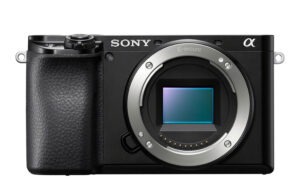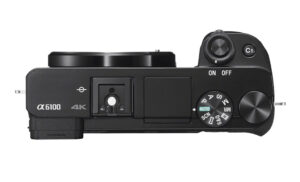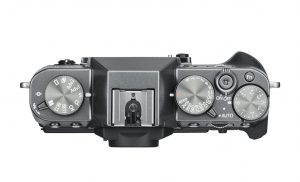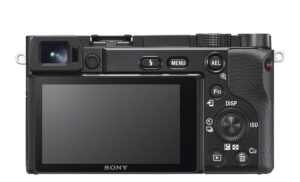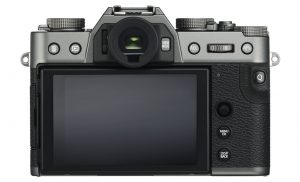If we look at the price (at least the American one), it would perhaps be more correct to compare the Fujifilm X-T30 to the Sony A6400, but it turns out we already did!
The recent A6100 is the next in line. It shares many characteristics with the A6400, making it a logical competitor for the Fuji model. In this vast market of mid-range APS-C mirrorless cameras, you’ll be likely to come across these two cameras and wonder how they compare. The good news is that you’ve come to the right place for the answers!
Additional coverage:
A6100 vs A6400 vs A6600 – A6000 vs A6100 – A6100 vs A6300 –
A6100 vs EOS M6 II – A6100 vs X-T30
Ethics statement: The information supplied in this article is based on official specs and our experience with the X-T30. We were not asked to write anything about these cameras, nor were we provided with any kind of compensation. Within the article, there are affiliate links. If you decided to buy something after clicking the link, we will receive a small commission. To know more about our ethics, you can visit our full disclosure page. Thank you!
1. Image sensor
The A6100 and the X-T30 share the same sensor size (APS-C format) but have a slightly different resolution: 26.1MP for the Fuji model and 24.2MP for the Sony camera.
The X-T30 sensor, which is the same found inside the X-T3, has a BSI structure (Back-illuminated, which collects more light) and lacks the anti-aliasing filter.
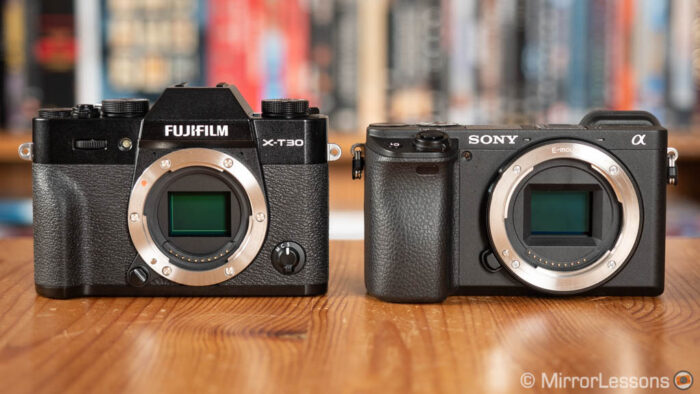
The A6100 uses the same sensor found inside the A6400 and A600. It doesn’t have a BSI design but the thin wiring layer helps it gather light more efficiently.
The Sony sensitivity range goes from ISO 100 to ISO 32000, with push values going up to 51200 ISO. The X-T30 goes from 160 to 12800 ISO. The highest extended level is the same as the A6100 but you also get pull values down to ISO 80.
Then we have a difference that applies to most Fujifilm cameras. The X-T30 sensor uses the X-Trans design, where you’ll find at least one red, blue and green pixel on every horizontal and vertical line, unlike the standard Bayer solution found in the A6100. The Fuji design makes it possible to ditch the anti aliasing filter and, according to Fujifilm, improve colour reproduction.
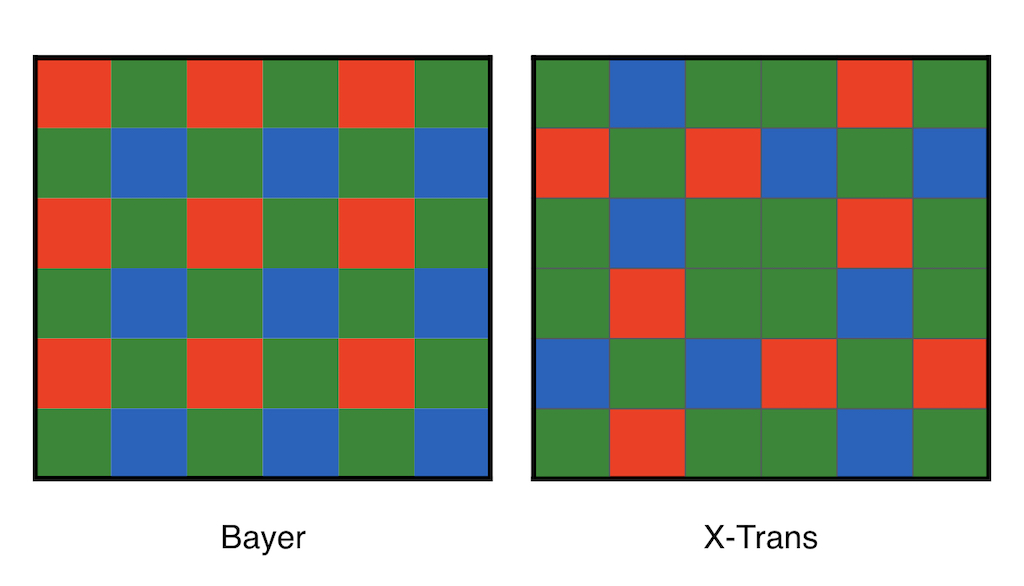
Do you want to find out more about image quality? Then head over to our A6400 vs X-T30 full comparison. The A6100 uses the same sensor as the A6400 so you’ll get a realistic idea of how these two cameras compare. (The only difference is the extra 102400 extended ISO value on the A6400, which is related to the image processor.)
2. Movie recording
Both cameras can record 4K up to 30fps, or 1080p up to 120fps. If we look at the various settings though, the X-T30 is the more advanced contender here.
You’ll find useful settings for more advanced filmmakers such as the F-Log curve, the Eterna profile which was specifically created for video, useful DR settings and even the possibility to output 10-bit 4:2:2 via the HDMI port.
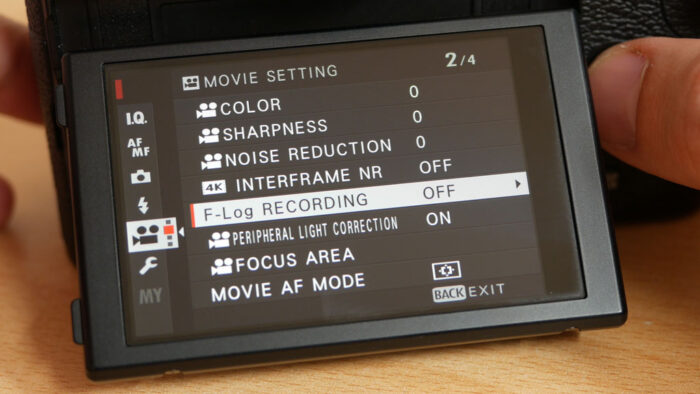
The A6100 lacks the Picture Profiles (picture settings designed for video) that you usually find on Sony’s mirrorless cameras. This means no log curve or any other image settings other than the Creative Styles which are the standard profiles for still photography.
The Sony has one advantage though and that is the recording time. The X-T30 is limited to 10 minutes per clip in 4K, or 15 minutes in Full HD. The A6100 on the other hand can record up to 30 min/clip in all resolutions.
If you want to record audio, you’ll find a 3.5mm input on the A6100 but no headphone output. On the X-T30, there is a 2.5mm port which means you’ll need a 2.5 to 2.5mm adapter. You can also use the USB C port to connect your headphones with another adapter (check out our X-T30 accessory list to find out more).
3. Autofocus and tracking
The A6100 inherits the latest autofocus system Sony has developed for other recent APS-C cameras such as the A6400 and A6600.
There are 425 phase and contrast detection points distributed across 84% of the sensor’s surface. The camera can focus as fast as 0.02s. The software includes AI technology and real-time tracking which analyses the image on different levels (colours, pattern, depth etc.) to improve accuracy. We tested the same version on the A6400 and it is indeed an impressive achievement.
The X-T30 shares the same AF system as the X-T3, with 117 points that cover more than 90% of the sensor area. These points can be subdivided into 425 points with certain setting combinations. The tracking mode is not as good as the Sony, but otherwise the X-T30 performs really well for both static and moving subjects in good and low light conditions.
Once again, if you want to find out more about the autofocus performance, you can use our A6400 vs X-T30 full comparison as reference since the A6100 and A6400 share the same autofocus system.
4. Eye detection
Both cameras have face and eye detection settings. The X-T30 behaves very well overall and can start detecting a face or an eye from a reasonably long distance. You can use the AF joystick or the touch screen to switch from one face to the other when taking group shots. Occasionally though, the camera will detect a face where there is no human presence.
The A6100 features real time Eye AF and is the most reliable eye detection system you can find. It is very fast and precise, works seamlessly from different distances and you can choose to track human or animal eyes!

5. Continuous shooting
The A6100 can shoot in continuous mode up to 11fps whereas the X-T30 is slower with a maximum of 8fps. However this is only taking into account the default mechanical shutter!
If we switch to the electronic shutter, the Sony’s speed doesn’t increase whereas the X-T30 can shoot as fast as 30fps with a crop (1.25x), or 20fps with full resolution. There is also the Pre-Shot mode where the camera starts to save frames before fully depressing the shutter button. All the electronic shutter burst speeds work with live view and no blackouts.
Thanks to the e-shutter mode, the X-T30 can also increase the maximum shutter speed to 1/32000s. (Both cameras go as fast as 1/4000s with the mechanical curtains.)
6. LCD screen
The A6100 features an LCD screen with 921k dot resolution. It can be tilted up 180˚ or down 74˚, making it useful for a lot of different shooting angles and conditions. The X-T30 monitor has a more limited tilting range of 95˚ up and approximately 45˚ down.

Both LCDs are touch sensitive. On the Sony, this function mainly works with the focus area. You can tap to change the focus position, or activate real time tracking to start following a subject. You can also use it as an AF Pad when composing with the EVF.
On the X-T30, you’ll find similar options concerning the AF area but you can also change settings in the Q menu, or activate up to four functions by flicking left, right, up or down.
7. Viewfinder
Both cameras feature a built-in OLED viewfinder which is 0.39-in large but that’s where the similarities end.
The Sony version has a higher magnification (0.7x vs 0.62x) but a lower resolution (1,440k dots vs 2,359k dots on the Fuji). The X-T30 can also increase the refresh rate to 100fps when the Boost mode is activated.
Then we have the position of the EVF itself. On the A6100 it is located on the left side when looking at the camera from behind, a position you’ll find on rangefinder cameras as well as products such as the Fuji X-Pro and X100. The X-T30’s viewfinder is at the centre, extending from the top plate, which gives the camera a more traditional SLR appearance.
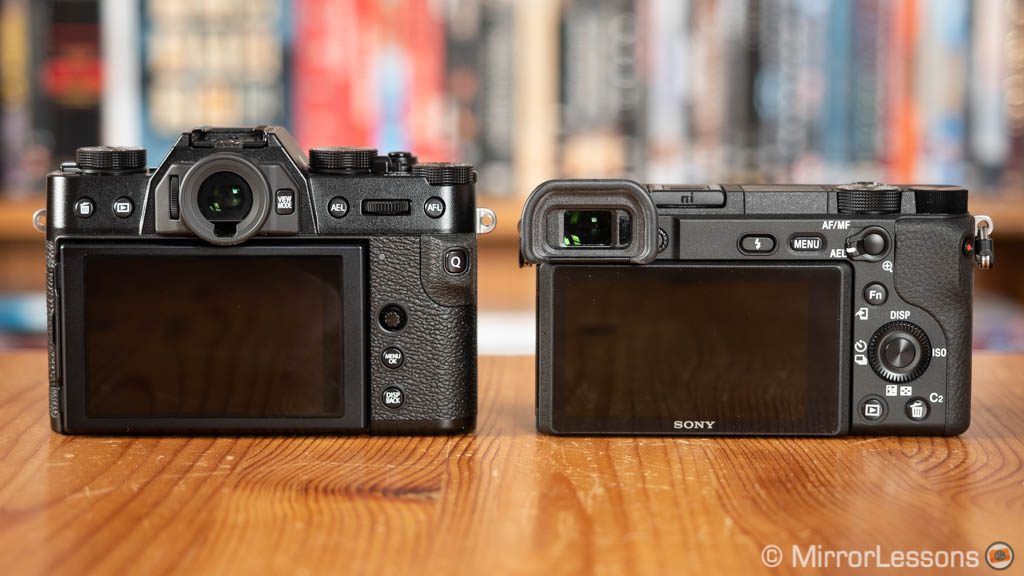
8. Design
The X-T30 sligthly smaller than the A6600 except for the height because of the protruding viewfinder. The Sony has a larger grip out front. Neither camera is weather sealed.
- a6100: 120.0mm x 66.9mm x 59.amm, 396g
- X-T30: 118.4mm x 82.8mm x 46.8mm, 383g
The X-T30 is available in three colour combinations: all black, black and silver or black and charcoal. The latter in particular is very pretty. The A6600 is available in black or silver.
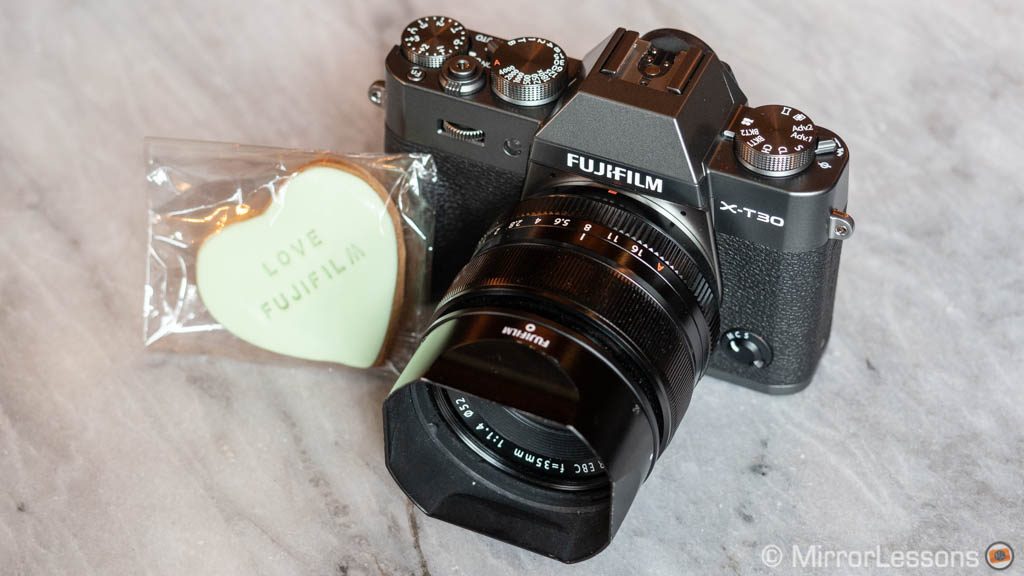
The a6100 has a normal shooting mode dial and a good array of buttons but it lacks more dials to control exposure and other important settings in comparison to the X-T30.
The X-T30 features more controls including drive, shutter speed and exposure compensation dials. You’ll find two front/rear dials and a joystick on the rear that is used to move the AF area as well as navigate the menu. A focus mode switch (S-AF, C-AF or MF) is available on the front of the camera.
9. Lenses
The Sony lens catalogue doesn’t have the most attractive selection if you only consider the APS-C offerings. There are good prime lenses with 1.8 or 1.4 apertures (thanks to Sigma especially), but most of the zooms start from f/4 or slower. Thankfully Sony has recently announced the 16-55mm f2.8 which gives the series its first fast zoom.
If we look at the full frame E-mount options, the list extends considerably. While some lenses like the 70-200mm f4 can be a good fit for the camera, many of these lenses are either too large/heavy/expensive for the a6100 body.
Fujifilm has worked hard to make its APS-C range of lenses as complete as possible. There is a good selection of correctly priced primes and zooms, good quality kit lenses to start with (the 18-55mm especially) and more high end lenses such as 2.8 constant zooms and telephoto lenses. It doesn’t have a lot of support from third party brands however, if we exclude the manual focus options, but lately Viltrox has started to release some affordable autofocus primes for X-mount as well. (Note that they are also available for Sony.)
10. Price
The A6100 is the more recent model here and has been launched at the retail price of $750, £830 or €900 body only. The 16-50mm kit lens will cost you approximately $100 extra.
The X-T30 can be found for around $900 / £850 / €900. Add about $100 for the 15-45mm kit lens, or around $300 for the XF 18-55mm.
Conclusion
Depending on where you live, the A6100 might look like the more affordable model but the X-T30 has been around for some time and you might come across special offers or cash-backs if you’re lucky.
The quality and performance are very similar, with the main difference being the colour profiles designed by each brand. The Sony delivers better results in the autofocus department, especially when it comes to the Tracking and Eye AF modes. The X-T30, on the other hand, is superior when using the electronic shutter thanks to its superior burst speeds and blackout-free live view.
The Fuji will satisfy users who want to dig more into the video settings. You’ll find more options to control the image output including the excellent F-Log profile. The recording time is shorter however and it doesn’t have the 180˚ tilting capabilities of the Sony LCD screen.
Reminder: the links below are affiliate links. If you decided to buy something after clicking the link, we will receive a small commission.
Check price of the Sony a6100 on
B&H Photo
Check the price of the Fujifilm X-T30 on
Amazon | Amazon UK | B&H Photo | eBay



